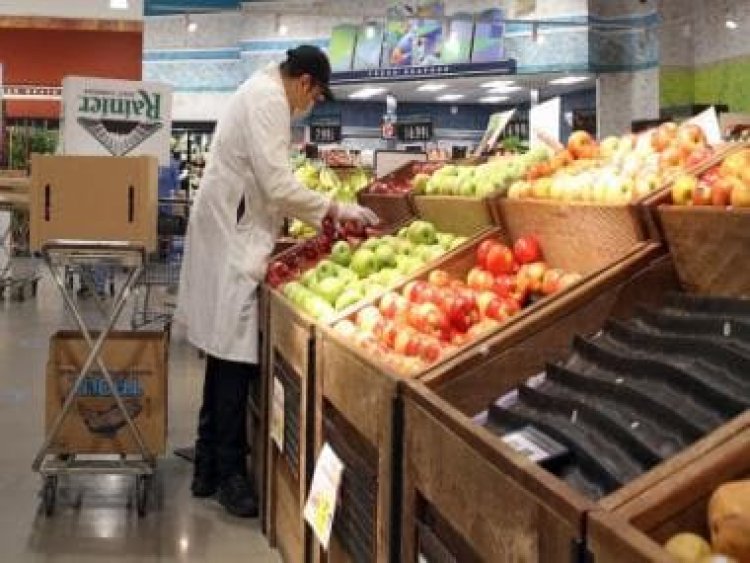Do Americans not have enough money to pay for even groceries right away?
Do Americans not have enough money to pay for even groceries right away?

We all know about America’s extensive use of buying things on credit. Now, with the US seeing an inflation like no other and prices of food and groceries soaring to new highs, Americans are opting for the credit system and a huge amount of them are using Buy Now, Pay Later (BNPL) apps to purchase their daily needs.
We take a closer look at what exactly are these apps and why an increasing number of Americans are choosing to use them for their provisions.
Buy Now Pay Later apps
‘Buy Now Pay Later isn’t some new trend in the market. They have been around for long, but the only difference is that earlier they were used for the purchase of big-ticket items such as a house or a car or some exotic holiday.
The Buy Now Pay Later payments resemble a personal loan — your payments are split into equal instalments over a period of time. What is most attractive about this form of payment is that they are often interest-free as long you make your payments on time and in full. Some apps charge interest if consumers want to spread payments out for a longer period of time and late fees can accrue quickly if a payment is missed.
The American market has several Buy Now Pay Later apps such as Klarna, Affirm, Afterpay, Apple Pay and Sezzle.
Growth of Buy Now Pay Later apps
BNPL is a payment option you may see more now than you did in the earlier 2000s. During hard economic times when inflation is high, BNPL is a helpful option for people making purchases.
A September 2022 Consumer Financial Protection Bureau (CFPB) revealed that the number of BNPL loans originated in the US by the five lenders it surveyed grew from 16.8 million to 180 million.
These BNPL apps have blossomed in the past two-three years and the COVID-19 pandemic is partially the reason for it. For instance, Australia-based Afterpay saw active US customers more than double to 6.5 million in the fiscal year ending 30 June 2020, and its sales more than tripled in the July-September quarter from a year earlier.
The same can be said for other BNPL apps too. Now, consumers are also using these same BNPL apps for everyday buys, such as grocery shopping, bill payments or fuel top-ups. A survey carried out from LendingTree Inc and reported by Bloomberg showed that almost half of all Americans have used BNPL apps, and of those, about one in five rely on such apps to buy groceries.
In December 2022, downloads for the top four apps exceeded three million, a 20 per cent increase over the same month in 2020, according to research from Bank of America. A CFPB report had similar figures to share. The five main lenders had loans worth $24.2 billion in 2021, a staggering increase to the $2 billion in 2019.
Experts have also noted that the use of these BNPL apps is evolving. First, used for high-cost items, today, they are being used for most things.

At first, buy now, pay later shoppers were typically high earners who used repayment options to cover fashion, beauty or large travel purchases, Colleen McCreary, consumer financial advocate for Credit Karma, was quoted as saying to NBC News. But in recent years, the income range of shoppers has become wider, she said, “It’s becoming more and more a replacement for people who don’t have any other options,” she said. “They’re just grabbing whatever option that they can get at the checkout line to get what they need.”
Food pain in America
If the pandemic was one reason the use of BNPL apps rose, inflation and soaring food prices is another reason for their booming business. Food inflation is still very high in the US and prices of groceries are at unbelievable levels.
Ordinary Americans have been watching their grocery bills climb to new heights as prices rise on eggs, cereals, meat, dairy, fruits, and vegetables — virtually everything they eat. According to the US Department of Agriculture, the price of food for home consumption rose by 11.4 per cent last year — the highest yearly percent change since 1974 — and it’s expected to rise by another 8.6 per cent in 2023.

Regular Americans have been feeling the pain of rising food prices. For instance, Alana Auston, a 24-year-old senior strategic planner from Flint Township, Michigan, told TIME magazine her family of three is now spending twice as much on groceries compared to last year.
Also read: How California floods could drive up food prices in the US
The food prices have risen so drastically that a recent survey by financial software company Propel showed that almost a third were skipping meals, eating less, or relying on food banks.
But why has food prices soared sky-high?
There’s a multitude of reasons. There are supply-chain snags, the avian flu epidemic that is driving up the cost of eggs, climate issues like drought and the war in Ukraine, which has raised the cost of commodities.
And despite some experts stating that using BNPL apps for groceries and other items can be risky business, the common American is simply worried about putting food on their plate and not the long-term risks.
As Faith Smith told Bloomberg, “I’m worried. I’m living paycheck to paycheck even though I shouldn’t be. Using these services is the only means of survival.”
With inputs from agencies
Read all the Latest News, Trending News, Cricket News, Bollywood News,
India News and Entertainment News here. Follow us on Facebook, Twitter and Instagram.
What's Your Reaction?


























































